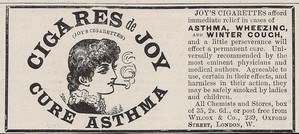From the pages of that trusty source of the latest developments in medical politics, The British Medical Journal (7 January 2017), comes an arresting news item:
More than 1000 doctors and other healthcare workers…have written an open letter to the prime minister, Theresa May, and England’s health secretary, Jeremy Hunt, urging them to publish a new Tobacco Control Plan ‘without further delay’ to address inequalities in health.
The letter was organized by Dr Nicholas S Hopkinson, who does seem rather prone to writing open letters to the government. In fact he wrote one in 2014 but then only managed to garner 590 signatures. This was on the subject of plain packaging of cigarettes. (See Chapter 20 of my Smoking is a Psychological Problem.) At least he’s trying to do his bit.
In the current letter signed by a battalion of health-care professionals it’s quite right that they should speak up to address inequalities in health. Let me explain what I think this means.
In her inaugural speech from Downing Street in July 2016, the Prime Minister, anticipating Donald Trump, used the splendid phrase ‘one-nation government’ saying that it was in this spirit that she planned to lead the nation.
This was followed by a kind of creed:
…we believe in the Union: the precious, precious (sic) bond…we believe in a union…between all of our citizens, every one of us, whoever we are and wherever we’re from.
The next sentence was a ringing declaration:
That means fighting against the burning injustice that, if you’re born poor, you will die on average nine years earlier than others.
Apart from the poor, she went on to rail against various injustices she believes certain other people may be more likely to suffer, that is, people who are black, white working-class, women and the young. Is there anyone she’s left out?
I’ll not attempt to solve all the world’s problems in this blog, so let’s just stick with the poor, those unfortunate people who are more prone to suffer inequalities in health and have a shorter life-span. According to the letter:
Half this difference in life expectancy is because of higher rates of smoking among the least affluent, so major improvements can be achieved by driving down smoking rates among the most disadvantaged.
This is true, but how to do the driving down? It seems the 1000 signatories haven’t much idea and are imploring Mrs May to show them the way.
What they expect to hear, no doubt, is more of the same. We can assume this includes plain packaging, tax increases on cigarettes, further restriction of smoking in public places, gruesome pictures of diseased body parts on cigarette packs and scary health warnings. In addition, the letter ponderously tells the PM that the new Tobacco Control Policy requires:
…comprehensive and sustained government strategy…to ensure adequate funding for the recurring costs of measures that are known to be effective – mass media campaigns, smoking cessation services and tackling tobacco smuggling, etc.
As I have said many times, this is all well and good but it doesn’t get to the heart of the problem.
Why are cigarettes regarded as part of the landscape? How can the government justify allowing the continued open sale of cigarettes? At the current rate of decline it will take decades for smoking prevalence to reach zero, if it ever does. And how many people will die from smoking-related diseases in the meantime?
Why don’t they ask Mrs May to ban tobacco?
Text © Gabriel Symonds


Leave A Comment